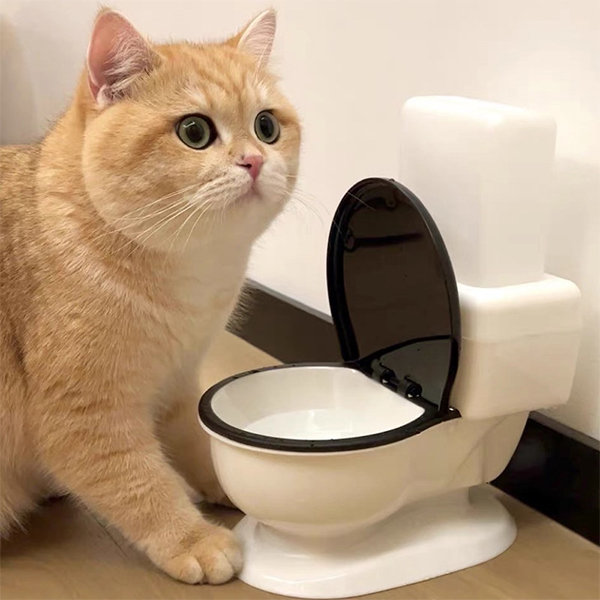They are making several good observations related to Don’t flush cat feces down the toilet overall in this article following next.

Introduction
As cat proprietors, it's vital to bear in mind just how we throw away our feline buddies' waste. While it might seem practical to purge pet cat poop down the commode, this technique can have destructive repercussions for both the atmosphere and human wellness.
Ecological Impact
Flushing feline poop introduces hazardous microorganisms and parasites into the water supply, positioning a substantial threat to aquatic environments. These contaminants can negatively influence aquatic life and compromise water top quality.
Health Risks
In addition to environmental concerns, purging feline waste can also pose wellness risks to human beings. Cat feces may include Toxoplasma gondii, a bloodsucker that can trigger toxoplasmosis-- a possibly serious disease, especially for expecting females and people with damaged body immune systems.
Alternatives to Flushing
Thankfully, there are more secure and more accountable means to get rid of feline poop. Think about the following options:
1. Scoop and Dispose in Trash
One of the most typical technique of taking care of feline poop is to scoop it right into a naturally degradable bag and toss it in the trash. Be sure to utilize a committed litter inside story and throw away the waste immediately.
2. Usage Biodegradable Litter
Choose biodegradable cat clutter made from products such as corn or wheat. These clutters are environmentally friendly and can be securely thrown away in the garbage.
3. Bury in the Yard
If you have a backyard, consider hiding feline waste in a marked location away from veggie yards and water resources. Make certain to dig deep enough to stop contamination of groundwater.
4. Install a Pet Waste Disposal System
Buy a family pet waste disposal system particularly developed for cat waste. These systems use enzymes to break down the waste, decreasing odor and environmental effect.
Verdict
Responsible family pet possession extends past giving food and sanctuary-- it also involves appropriate waste monitoring. By avoiding flushing pet cat poop down the toilet and going with different disposal approaches, we can decrease our environmental impact and secure human health.
Why Can’t I Flush Cat Poop?
It Spreads a Parasite
Cats are frequently infected with a parasite called toxoplasma gondii. The parasite causes an infection called toxoplasmosis. It is usually harmless to cats. The parasite only uses cat poop as a host for its eggs. Otherwise, the cat’s immune system usually keeps the infection at low enough levels to maintain its own health. But it does not stop the develop of eggs. These eggs are tiny and surprisingly tough. They may survive for a year before they begin to grow. But that’s the problem.
Our wastewater system is not designed to deal with toxoplasmosis eggs. Instead, most eggs will flush from your toilet into sewers and wastewater management plants. After the sewage is treated for many other harmful things in it, it is typically released into local rivers, lakes, or oceans. Here, the toxoplasmosis eggs can find new hosts, including starfish, crabs, otters, and many other wildlife. For many, this is a significant risk to their health. Toxoplasmosis can also end up infecting water sources that are important for agriculture, which means our deer, pigs, and sheep can get infected too.
Is There Risk to Humans?
There can be a risk to human life from flushing cat poop down the toilet. If you do so, the parasites from your cat’s poop can end up in shellfish, game animals, or livestock. If this meat is then served raw or undercooked, the people who eat it can get sick.
In fact, according to the CDC, 40 million people in the United States are infected with toxoplasma gondii. They get it from exposure to infected seafood, or from some kind of cat poop contamination, like drinking from a stream that is contaminated or touching anything that has come into contact with cat poop. That includes just cleaning a cat litter box.
Most people who get infected with these parasites will not develop any symptoms. However, for pregnant women or for those with compromised immune systems, the parasite can cause severe health problems.
How to Handle Cat Poop
The best way to handle cat poop is actually to clean the box more often. The eggs that the parasite sheds will not become active until one to five days after the cat poops. That means that if you clean daily, you’re much less likely to come into direct contact with infectious eggs.
That said, always dispose of cat poop in the garbage and not down the toilet. Wash your hands before and after you clean the litter box, and bring the bag of poop right outside to your garbage bins.
https://trenchlesssolutionsusa.com/why-cant-i-flush-cat-poop/

I discovered that article on Don’t flush cat feces down the toilet while browsing the search engines. Loved our blog posting? Please share it. Let another person find it. We truly appreciate reading our article about Don’t flush cat feces down the toilet.
Book
Comments on “Potential Risks of Flushing Cat Poop Down Your Toilet - Tips for Safer Handling”